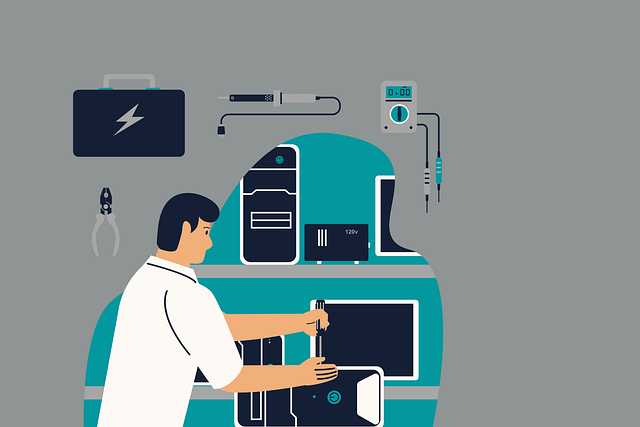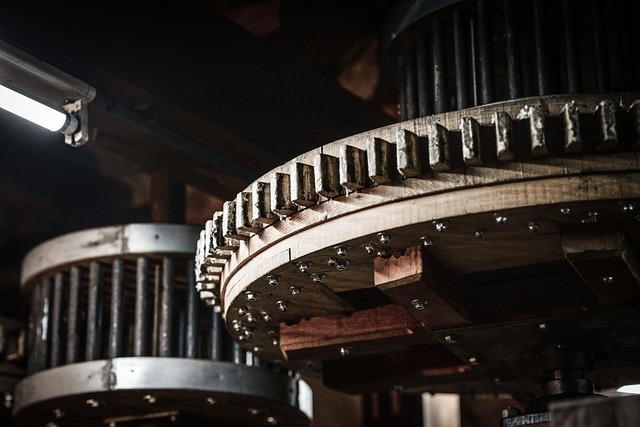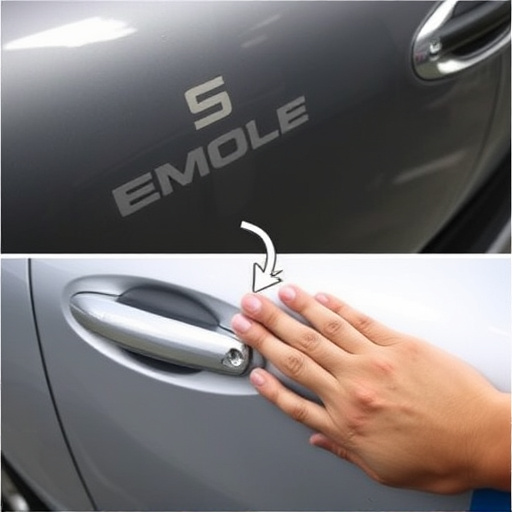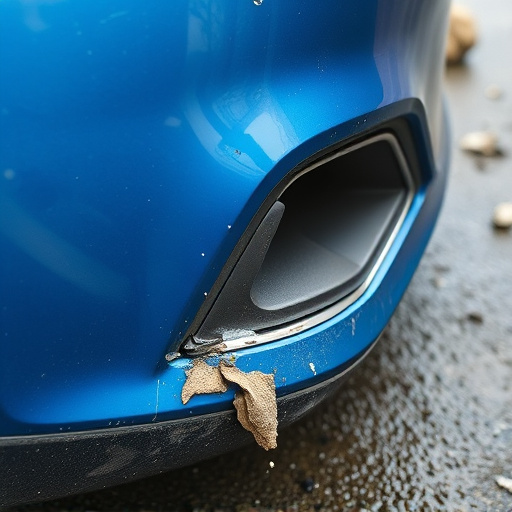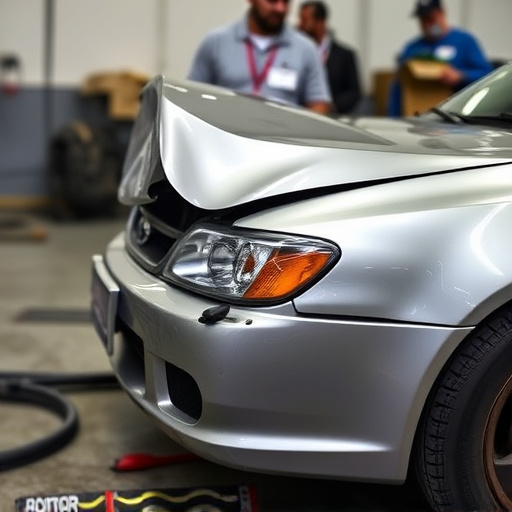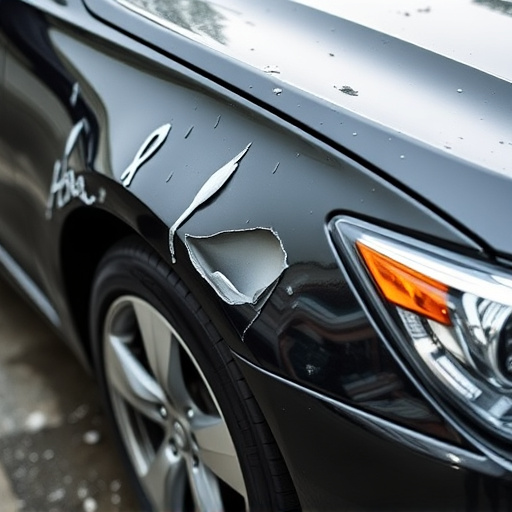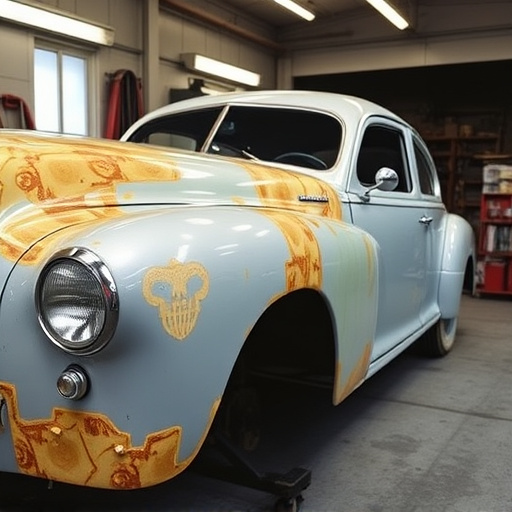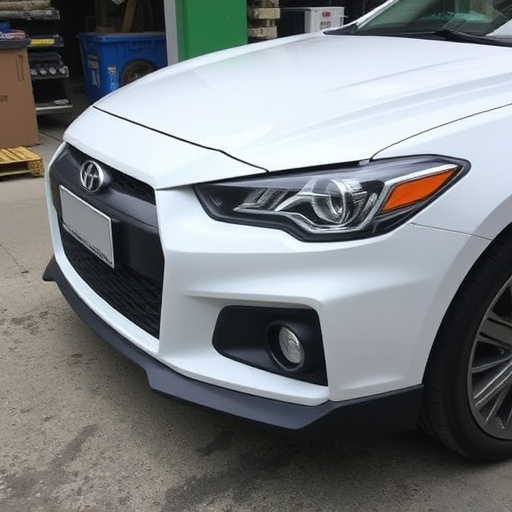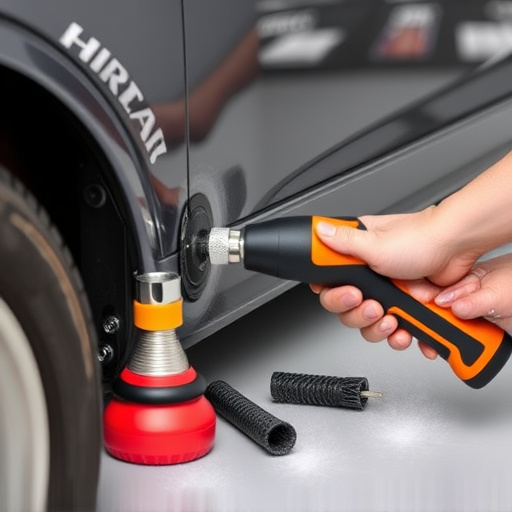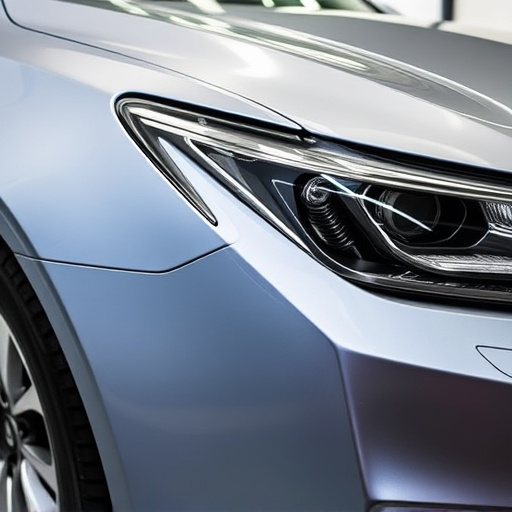Mercedes aluminum welding combines precision and innovation using two methods: rivet bonding for structural repairs without melting metal, and MIG (Metal Inert Gas) welding for intricate designs and complex patterns. Rivet bonding enhances structural integrity, while MIG welding allows precise control over weld quality and speed, making it ideal for intricate auto body structures. This dual-method approach ensures precise fitment, aesthetic appeal, and prolonged vehicle component lifespans, pivotal for modern automotive care and restoration.
Mercedes aluminum welding is a precision art that combines innovative techniques for superior craftsmanship. This article delves into the fundamentals of merging high-quality aluminum components, exploring two primary methods: rivet bonding and MIG (Metal Inert Gas) welding. Rivet bonding offers unparalleled strength and durability, while MIG welding ensures seamless connections. By understanding these processes, artisans can achieve exceptional results in Mercedes aluminum welding projects, showcasing precision and excellence.
- Mercedes Aluminum Welding: Understanding the Basics
- Rivet Bonding: A Key Technique for Strength and Durability
- MIG Welding: Modern Method for Seamless Connections
Mercedes Aluminum Welding: Understanding the Basics
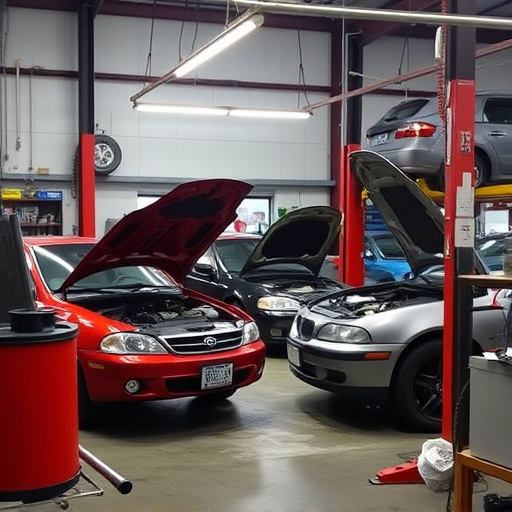
Mercedes aluminum welding is a specialized technique that combines precision and innovation to create robust and aesthetically pleasing connections in automotive fabrication. The process involves two primary methods: rivet bonding and MIG (Metal Inert Gas) welding. Rivet bonding, as the name suggests, uses mechanical fasteners to join aluminum panels, ensuring a strong and secure bond without melting or fusing the metal. This technique is often employed for structural repairs and is known for its effectiveness in maintaining vehicle integrity.
MIG welding, on the other hand, involves using a high-voltage electric arc to melt and fuse aluminum alloys together. This process allows for intricate designs and complex weld patterns, making it ideal for both structural and cosmetic applications. The ability to achieve precise control over the heat input and metal deposition enables skilled technicians to perform paintless dent repair and intricate car bodywork services, enhancing the overall quality of auto maintenance and restoration projects.
Rivet Bonding: A Key Technique for Strength and Durability
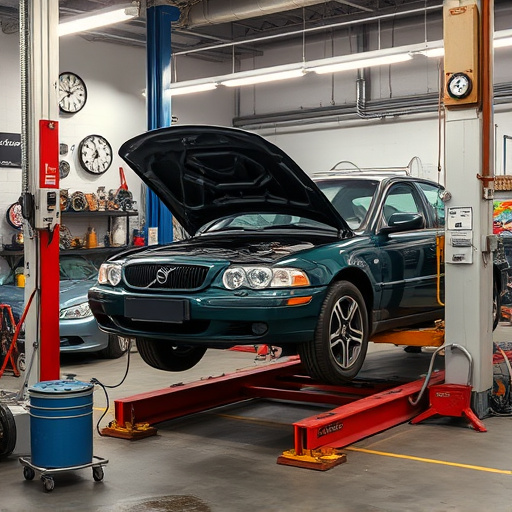
Rivet bonding is a key technique in Mercedes aluminum welding, offering unparalleled strength and durability for automotive repair and collision center operations. This method involves using specialized rivets to secure aluminum panels, creating a strong bond that’s both lightweight and resistant to corrosion. The process seamlessly integrates with MIG (Metal Inert Gas) welding, which is another critical technique employed in modern auto glass replacement and automotive repair processes.
By combining these two advanced methods, experts can ensure the structural integrity of Mercedes vehicles. Rivet bonding provides a robust foundation, while MIG welding refines the joints for precise fitment and seamless aesthetics. This dual-approach not only enhances the overall quality of repairs but also prolongs the lifespan of vehicle components, making it an indispensable practice in today’s demanding automotive landscape.
MIG Welding: Modern Method for Seamless Connections
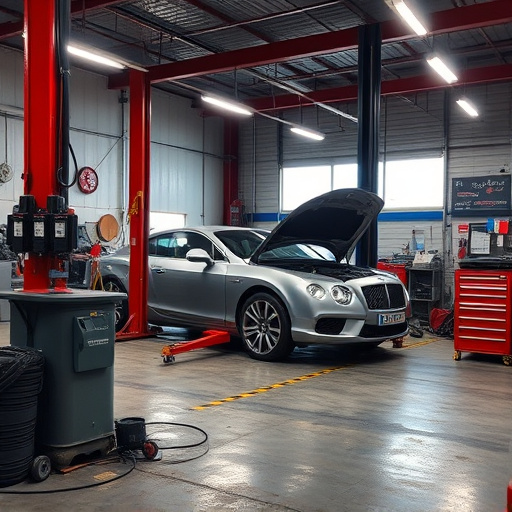
MIG welding has emerged as a modern method for achieving seamless connections in Mercedes aluminum welding applications. This advanced technique utilizes a wire feed to deliver a continuous arc, melting and joining the metal in a single pass. The process is highly efficient, allowing for precise control over weld quality and speed, which is particularly beneficial for complex auto body structures.
In the context of Mercedes aluminum welding, MIG welding plays a crucial role in hail damage repair and collision repair services. Its ability to create strong, durable bonds without introducing porosity or distorting the metal makes it an ideal choice for restoring vehicles to their original state. Moreover, the versatility of MIG welding allows for intricate designs and precise details, ensuring that damaged components are not only repaired but also enhanced in terms of aesthetics, matching the high standards expected from Mercedes vehicles.
Mercedes aluminum welding combines two powerful techniques, rivet bonding and MIG welding, to achieve superior strength and durability. Rivet bonding ensures a robust connection between components, while MIG welding provides seamless and precise welds, making it an ideal solution for high-quality automotive applications. By leveraging these advanced methods, Mercedes continues to set the standard for excellence in aluminum welding, delivering vehicles that are not only lightweight but also immensely strong and reliable.

